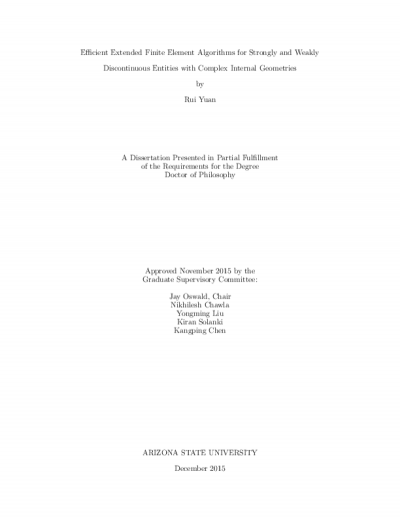Predicting structure-property relationships in polymers through the development of thermodynamically consistent coarse-grained molecular models

Description
Improved knowledge connecting the chemistry, structure, and properties of polymers is necessary to develop advanced materials in a materials-by-design approach. Molecular dynamics (MD) simulations can provide tremendous insight into how the fine details of chemistry, molecular architecture, and microstructure affect many physical properties; however, they face well-known restrictions in their applicable temporal and spatial scales. These limitations have motivated the development of computationally-efficient, coarse-grained methods to investigate how microstructural details affect thermophysical properties. In this dissertation, I summarize my research work in structure-based coarse-graining methods to establish the link between molecular-scale structure and macroscopic properties of two different polymers. Systematically coarse-grained models were developed to study the viscoelastic stress response of polyurea, a copolymer that segregates into rigid and viscous phases, at time scales characteristic of blast and impact loading. With the application of appropriate scaling parameters, the coarse-grained models can predict viscoelastic properties with a speed up of 5-6 orders of magnitude relative to the atomistic MD models. Coarse-grained models of polyethylene were also created to investigate the thermomechanical material response under shock loading. As structure-based coarse-grained methods are generally not transferable to states different from which they were calibrated at, their applicability for modeling non-equilibrium processes such as shock and impact is highly limited. To address this problem, a new model is developed that incorporates many-body interactions and is calibrated across a range of different thermodynamic states using a least square minimization scheme. The new model is validated by comparing shock Hugoniot properties with atomistic and experimental data for polyethylene. Lastly, a high fidelity coarse-grained model of polyethylene was constructed that reproduces the joint-probability distributions of structural variables such as the distributions of bond lengths and bond angles between sequential coarse-grained sites along polymer chains. This new model accurately represents the structure of both the amorphous and crystal phases of polyethylene and enabling investigation of how polymer processing such as cold-drawing and bulk crystallization affect material structure at significantly larger time and length scales than traditional molecular simulations.
Date Created
The date the item was original created (prior to any relationship with the ASU Digital Repositories.)
2016
Agent
- Author (aut): Agrawal, Vipin
- Thesis advisor (ths): Oswald, Jay
- Committee member: Peralta, Pedro
- Committee member: Chamberlin, Ralph
- Committee member: Solanki, Kiran
- Committee member: Jiao, Yang
- Publisher (pbl): Arizona State University








